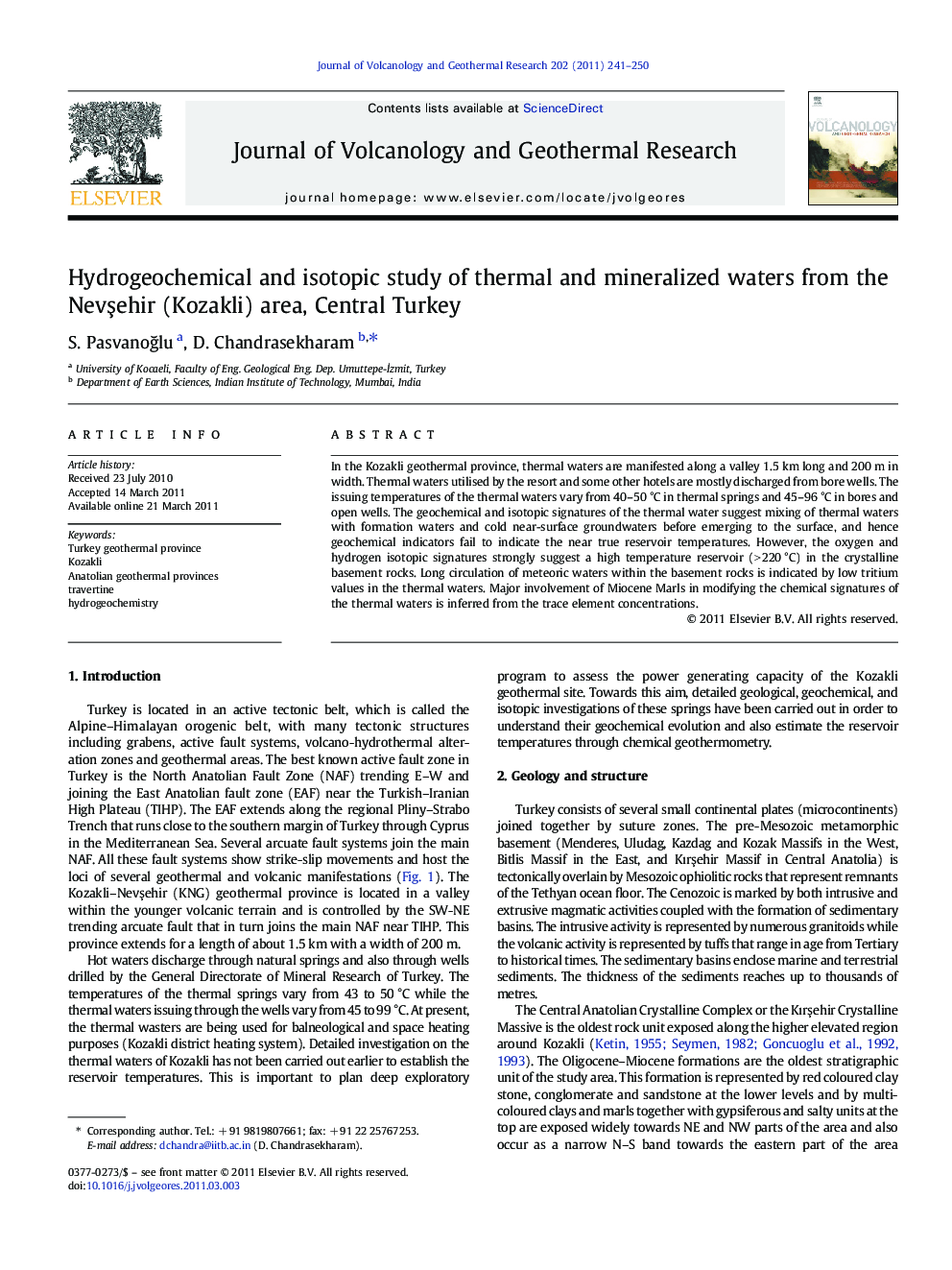| Article ID | Journal | Published Year | Pages | File Type |
|---|---|---|---|---|
| 4715074 | Journal of Volcanology and Geothermal Research | 2011 | 10 Pages |
In the Kozakli geothermal province, thermal waters are manifested along a valley 1.5 km long and 200 m in width. Thermal waters utilised by the resort and some other hotels are mostly discharged from bore wells. The issuing temperatures of the thermal waters vary from 40–50 °C in thermal springs and 45–96 °C in bores and open wells. The geochemical and isotopic signatures of the thermal water suggest mixing of thermal waters with formation waters and cold near-surface groundwaters before emerging to the surface, and hence geochemical indicators fail to indicate the near true reservoir temperatures. However, the oxygen and hydrogen isotopic signatures strongly suggest a high temperature reservoir (> 220 °C) in the crystalline basement rocks. Long circulation of meteoric waters within the basement rocks is indicated by low tritium values in the thermal waters. Major involvement of Miocene Marls in modifying the chemical signatures of the thermal waters is inferred from the trace element concentrations.
Research Highlights► The Kozakli geothermal waters have undergone initial SO4 enrichment followed by HCO3 enrichment. ► The Kozakli thermal waters are characterised by high B content that are sourced by the Miocene Marls. ► Isotope signatures of Kozakli thermal waters indicate high temperature geothermal system. ► The δ13C and δ18O support a thermal origin for the Kozakli travertine.
